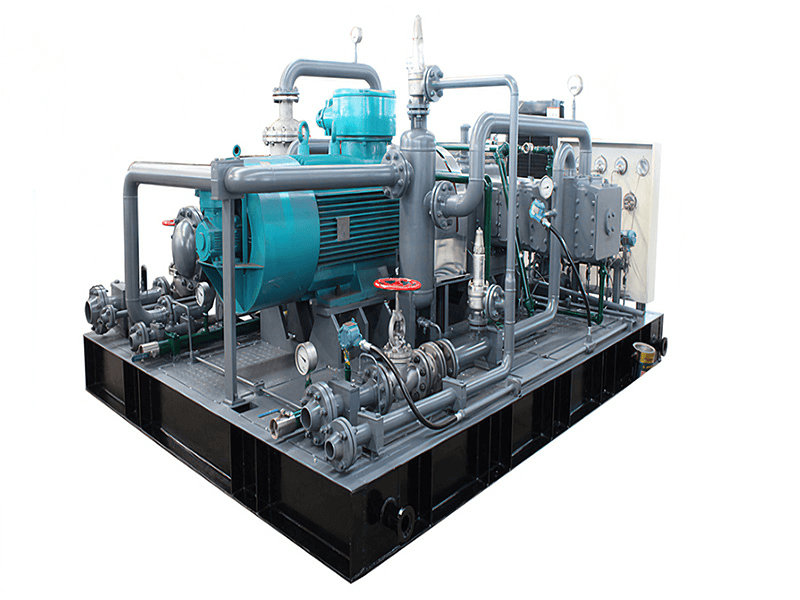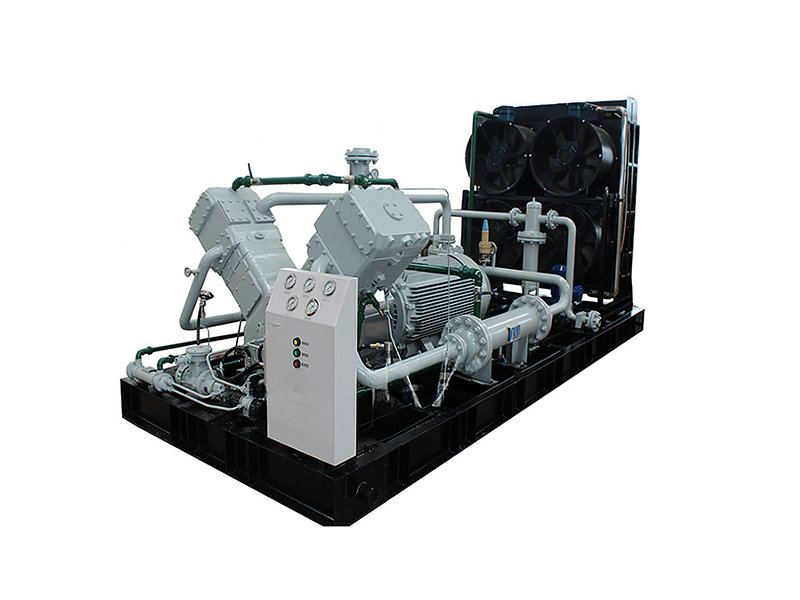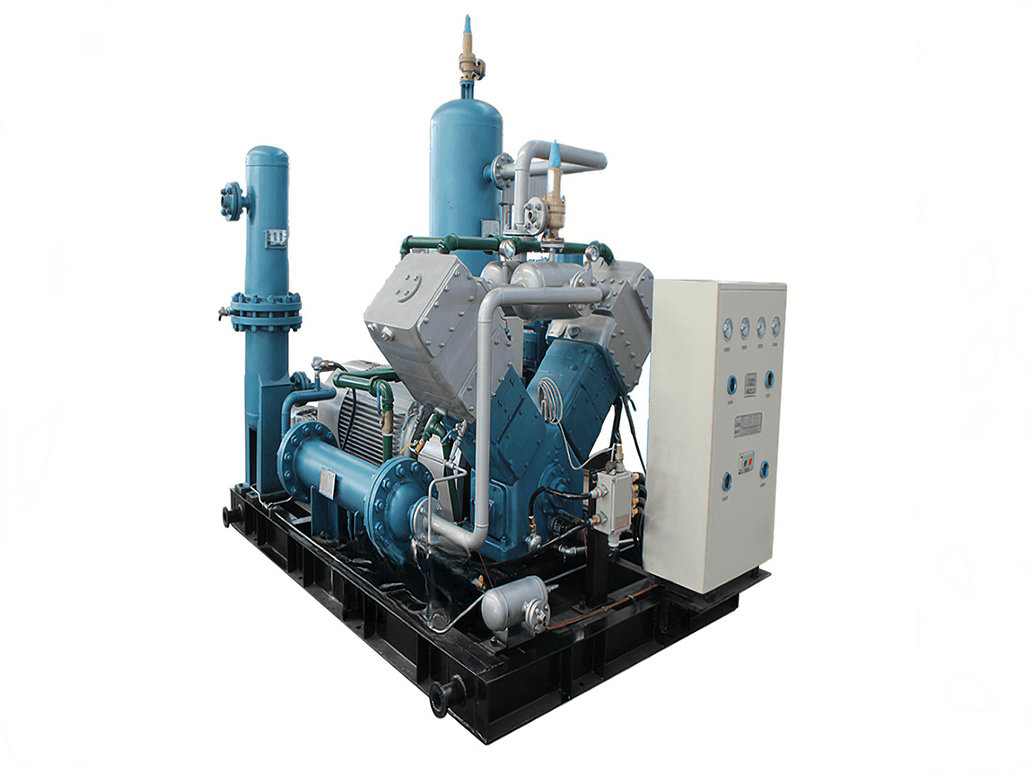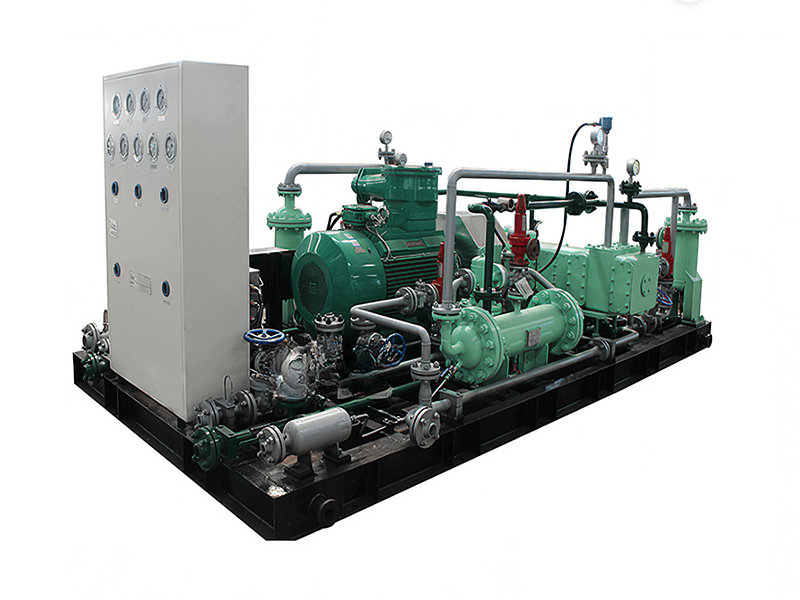The natural gas energy industry utilizes diverse gas sources with varying compositions. Efficient utilization relies heavily on the critical "power heart" – compressors. Below, we delve into the main gas types and reveal how they synergize with different types of compressors.
I. Detailed Explanation of Core Gas Types
1.Casinghead Gas:
Source & Characteristics: Exists in the annular space between the tubing and casing of oil wells, produced alongside crude oil. Composition is complex, containing methane plus significant proportions of nitrogen, carbon dioxide, and even hydrogen sulfide (sour gas). Pressure is typically low and highly variable. Direct venting wastes resources and pollutes the environment.
Value & Challenges: Collection and utilization offer both economic and environmental benefits. However, its high impurity content, low pressure, and instability pose stringent demands on processing equipment and compressors.
2. Associated Gas:
Source & Characteristics: Gas dissolved in crude oil that separates out when brought to the surface due to pressure reduction. Primarily methane, but also contains heavier components like ethane and propane (Natural Gas Liquids, NGLs), as well as impurities like water vapor and sand. Pressure and flow rate typically fluctuate with oil well production.
Value & Challenges: A vital source of energy and petrochemical feedstock. Its variability and impurities (liquids, solid particles) are the main challenges for compression and utilization.
3.Processed Dry Gas:
Source & Characteristics: Gas that has undergone deep purification processes (desulfurization, dehydration, hydrocarbon dewpointing) at gathering stations or natural gas processing plants. Primarily methane, with extremely low impurity levels (meeting water and hydrocarbon dewpoint specifications). Characterized by purity, stability, and relatively high, steady pressure.
Value & Challenges: Conforms to pipeline transmission or liquefaction (LNG) standards as a marketable product gas. Compression is primarily used for long-distance pipeline transmission or pre-liquefaction boosting, demanding high efficiency and reliability from compressors.
II. Compressors: Different Types for Different Gas Challenges
1.Reciprocating Compressors:
Principle: A piston moves back and forth within a cylinder to directly compress the gas. Strengths: High compression ratio (discharge pressure / suction pressure), small flow rates. Adaptable to variations in gas composition.
Suitable Gas Applications:
Casinghead/Associated Gas Reinjection: Boosting low-pressure casinghead or associated gas for injection back into the reservoir to maintain pressure and enhance oil recovery. High compression ratio capability is key.
Small Gathering Stations/Skid-Mounted Compression: Suitable for boosting associated gas at remote well sites or locations with lower production. Relatively compact structure.
CNG (Compressed Natural Gas) Stations:* Compressing pipeline gas to high pressure (typically 20-25 MPa) for filling vehicle cylinders. High compression ratio is the core requirement.
Advantages: High efficiency (especially at part load), high compression ratio, adaptable to gas composition changes.
Limitations: Relatively small flow capacity, higher vibration and noise levels, more wearing parts (piston rings, valves, etc.) requiring regular maintenance. Sensitive to liquid and solid impurities in the gas (requires robust inlet filtration/separation).

2.Screw Compressors:
Principle: Uses a pair of intermeshing helical rotors within a housing; gas is compressed as the volume between the rotor lobes changes during rotation. Often employs liquid injection (oil or water) for cooling, sealing, and lubrication.
Strengths: Medium to low compression ratios, small to medium flow ranges. Can tolerate moderate amounts of liquid and solid particles.
Suitable Gas Applications:
Primary Choice for Associated/Casinghead Gas Gathering: Ideal for handling wet associated/casinghead gas containing liquids (condensate, water) and sand. Oil-flooded screw compressors have very high tolerance for liquids. Widely used for boosting at wellheads and gathering stations.
Coalbed Methane/Shale Gas (Unconventional Gas):* Also suitable for handling gases that may contain liquids/impurities during initial production phases.
Fuel Gas Boosting: Supplying boosted fuel gas for gas turbines or boilers.
Advantages: Compact design, smooth operation, low vibration, high tolerance for moisture and minor solid impurities, good reliability, longer maintenance intervals.
Limitations: Single-stage compression ratio typically lower than reciprocating compressors. Efficiency generally slightly lower than a well-designed reciprocating machine at its design point. Oil-injected types require complex oil separation and cooling systems.
3.Centrifugal Compressors:
Principle: High-speed rotating impellers impart kinetic energy to the gas, which is then converted to pressure energy in a diffuser.
Strengths: Large flow rates, medium to low compression ratios. Flow capacity is its core advantage.
Suitable Gas Applications:
Natural Gas Pipeline Booster Stations: Core equipment for high-flow transmission in main pipelines, boosting processed dry gas in stages over thousands of kilometers.
Large Gas Processing Plants/LNG Liquefaction Plants:Used for raw gas boosting, refrigerant compression (in liquefaction processes), and other high-flow applications.
Large-Scale Storage Facility Injection/Withdrawal: High-flow compressors needed during injection cycles to rapidly inject gas underground.
Advantages: Very high flow capacity, smooth operation, low vibration, relatively low maintenance (especially non-contact magnetic bearing or air bearing types), oil-free compression (for dry gas).
Limitations: Efficiency drops sharply at low flow rates, prone to surge (dangerous unstable operation). Performance sensitive to changes in gas composition (affects performance curve). Single-stage compression ratio is low; high ratios require multiple stages in series. High manufacturing and installation costs.
III. Real-World Cases: Technology Empowering Industry
1. Xinjiang Oilfield Associated Gas Processing Project:
Challenge: Large volumes of associated gas from scattered wells: low pressure, containing liquids and impurities. Traditional flaring wasted resources and caused pollution.
Solution: Widespread deployment of oil-flooded screw compressors at wellheads and small gathering stations to boost and perform preliminary separation of associated gas before centralized transport to a processing plant.
Outcome: Significantly increased associated gas recovery/utilization, reduced flaring, delivering both economic and environmental benefits. The screw compressor's tolerance for wet gas was key to success.
2. Sichuan Shale Gas Field Boosting for Export:
Challenge: Rapid pressure decline in shale gas wells during early production requires timely boosting to maintain output and feed into the pipeline network.
Solution: Deployment of high-power reciprocating compressors or high-speed direct-coupled separable reciprocating compressors at well sites or gathering stations. Utilized their high compression ratio capability to boost low-pressure wellhead gas to pipeline export pressure.
Outcome: Effectively extended the stable production period of wells, ensuring efficient development and stable supply of shale gas resources. The high compression ratio of reciprocating compressors was a clear advantage here.
3. West-East Gas Pipeline Mainline Booster Stations:
Challenge: Covering thousands of kilometers, requiring overcoming pipeline friction to sustain massive gas transmission volumes (e.g., hundreds of billions of cubic meters annually).
Solution: Establishment of large booster stations at critical nodes along the pipeline. Core equipment consists of high-power centrifugal compressor trains (typically driven by gas turbines or electric motors), often using multiple stages in series to achieve the required pressure ratio.
Outcome: Ensured the efficient and stable operation of this national energy artery, continuously transporting natural gas from the west to the economically developed eastern regions. The centrifugal compressor's large flow capacity is irreplaceable for such national-scale projects.
Conclusion:
From complex, pressure-fluctuating casinghead and associated gases to pure, stable processed dry gas, the efficient operation of the natural gas energy value chain relies critically on the precise matching of compressors as the core power equipment. Reciprocating, screw, and centrifugal compressors each play vital roles in different gas handling and application scenarios, leveraging their unique strengths. A deep understanding of gas properties and compressor performance, enabling their optimal matching, is the technological foundation for enhancing resource utilization, ensuring production safety, and advancing the green, high-efficiency development of the natural gas industry. As the "dual carbon" goals progress, these "gas hearts" will continue to play an indispensable and crucial role in the energy transition.

























